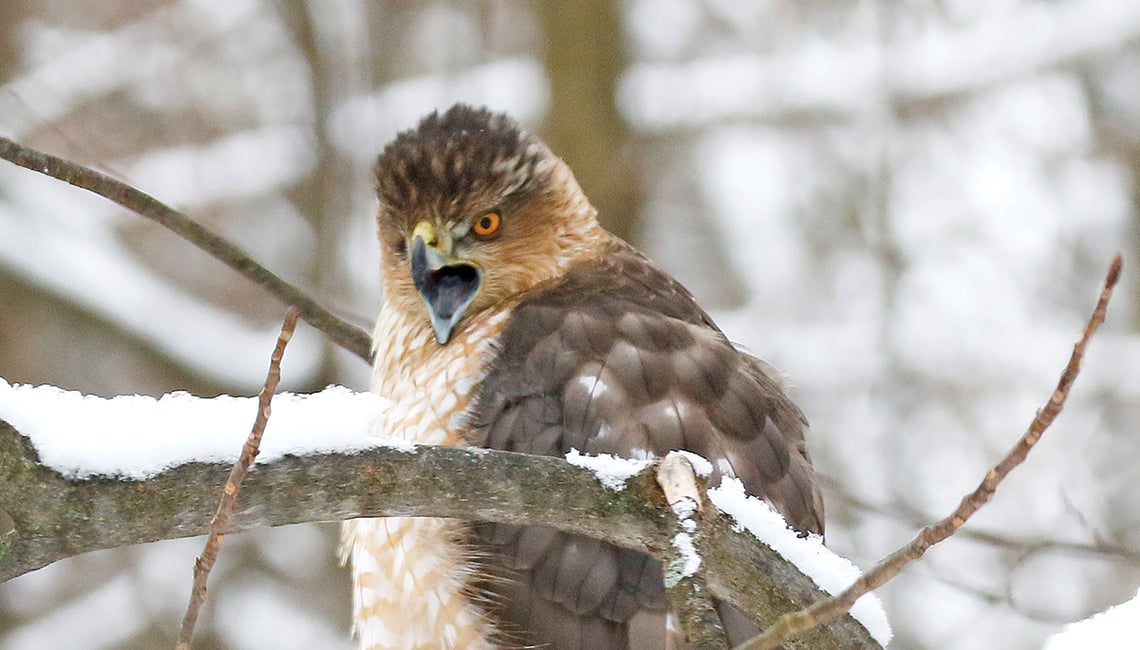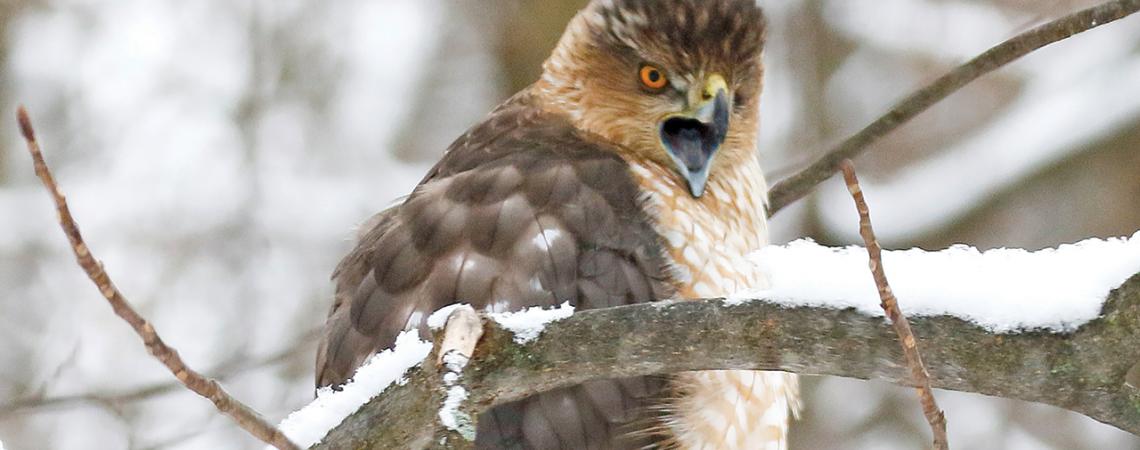Just about every winter, I receive a frantic email from an Ohio Cooperative Living reader that goes something like this:
“Help! A hawk is attacking the songbirds at my birdfeeder! What should I do?”
My response is invariably the same: “Relax and learn to appreciate what you’re seeing. Unlike most people, you have the privilege of a front-row seat to a natural event that happens every day in the wild: predation.”
The cooper's hawk has been described as a velociraptor with wings. (Photo by Chip Gross.)
It’s not the answer most want to hear, but the only alternative is to not feed birds. By choosing to feed, you congregate songbirds in numbers not normally found in the wild — and that, in turn, makes easy pickings for predators.
The most common hawk seen in the Buckeye State at winter feeders is the Cooper’s hawk. Sleek, fast, and deadly, this member of the accipiter grouping of hawks is one of the stealth fighter jets of Ohio’s bird world.
Feeding primarily on other birds, its short, broad wings and long, narrow tail equip it to pursue prey either on the wing through thick woodlands or on the ground through heavy brush. Cooper’s hawks are so aggressive they’ve been described as a velociraptor with wings.
Of course, that doesn’t mean they are always successful in an attack — far from it. For instance, the Cooper’s hawk pictured to the left tried to snag a songbird from one of my birdfeeders last winter and missed. It then perched low in a nearby tree for the next two hours, sulking and allowing me to take this particular photo and many more.
By the way, the hawk in the photo was not emitting its typical, fast cac-cac-cac-cac call when I snapped the picture. Rather, seemingly disgusted with itself for letting breakfast get away, its open mouth was a bored yawn. Regardless, no other birds dared return to my feeders until long after the Cooper’s had winged off in search of prey elsewhere.
Prey birds, including all of those at the right, seem to have an uncanny ability to know whom to fear. For instance, when an immature red-shouldered hawk — not nearly the bird predator a Cooper’s is — hung around near my feeders from time to time last winter in plain view, songbirds paid it little attention while going about their daily business.
Cooper’s hawks are crow-sized birds — females are generally a little larger than the males, which is typical for birds of prey. Courtship between a pair can be a dicey affair. If the male doesn’t approach the female just right, he could end up as lunch.
You don’t have to live in a rural area to see Cooper’s hawks. According to the latest Ohio Breeding Bird Atlas, the hawks’ expansion into urban areas has been among the most dramatic distributional changes seen in a North American bird in recent decades. I’m guessing at least part of the reason for that change is the increasing popularity of backyard birdfeeding.
Predation at winter birdfeeders does not end at dark. I once had a screech owl fly in and perch on one of my birdfeeders just at dusk. Wondering what it was up to, I kept checking on the owl every hour or so during the evening by shining a flashlight beam through my home-office window.
The bird was ultimately rewarded for its patience. A last check before I went to bed about 11 p.m. showed the small owl tussling with a flying squirrel that had made the mistake of gliding in from a nearby tall tree to chow down on some sunflower seeds. I had no idea that flying squirrels, being nocturnal, were visiting my birdfeeders after dark, but the screech owl certainly did.
W.H. “Chip” Gross is a member of Consolidated Cooperative and Ohio Cooperative Living’s outdoors editor.










